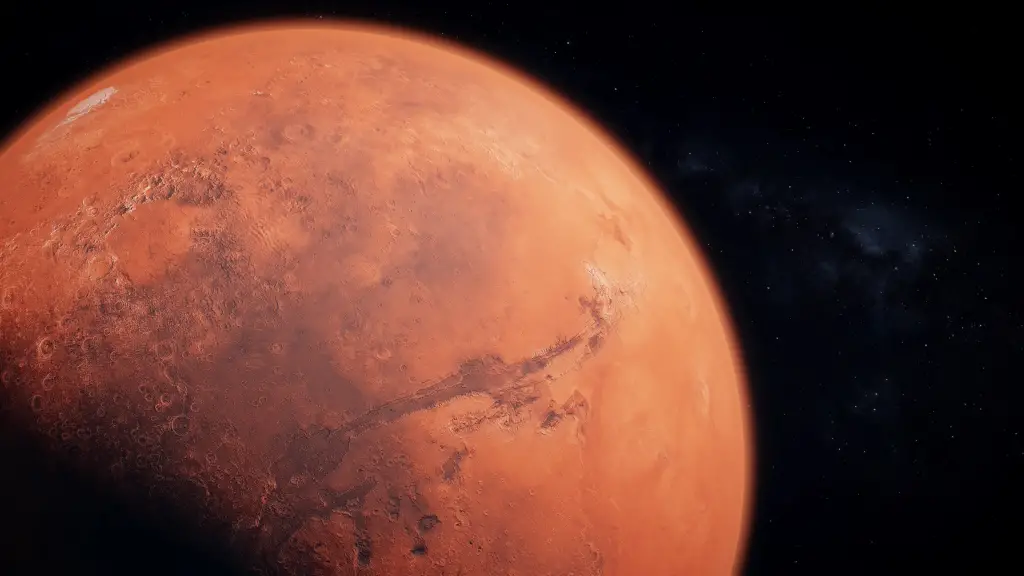By Using a Magnetic Shield, NASA Plans to Help Mars Recover Its Atmosphere for Future Human Colonization
TL;DR
NASA scientists have proposed deploying a large magnetic shield between Mars and the Sun to protect the planet from solar winds, which are believed to have stripped away its atmosphere billions of years ago. This shield could help Mars regenerate its atmosphere, potentially warming the planet and allowing liquid water to flow on the surface again. If successful, this method could make Mars habitable for future human colonization, providing a sustainable environment with oxygen extraction, plant growth, and protection from cosmic radiation.
NASA scientists have devised an ambitious strategy that could restore Mars’ atmosphere and make the planet livable for future human settlers.
By deploying a massive magnetic shield in space to shield Mars from solar winds, the space agency suggests it could help the Red Planet regain its atmosphere, potentially allowing liquid water to flow on its surface again, thereby making the Martian environment suitable for habitation.
While Mars is currently a cold, barren landscape, it is believed that the planet once had a dense atmosphere capable of sustaining vast oceans of liquid water and a warmer, more habitable climate.
Scientists theorize that Mars lost its atmosphere when its magnetic field disappeared billions of years ago, allowing solar wind—high-energy particles from the Sun—to strip the planet’s atmosphere away.
Now, NASA’s latest simulations suggest there might be a natural way to restore Mars’ thick atmosphere—and it doesn’t involve detonating nuclear bombs, as Elon Musk once suggested.
Instead, the space agency proposes launching a powerful magnetic shield into space, which could act as a substitute for Mars’ lost magnetosphere, giving the planet a chance to regenerate its own atmosphere.
At the Planetary Science Vision 2050 Workshop, NASA’s Planetary Science Division director, Jim Green, presented the idea of positioning an “artificial magnetosphere” between Mars and the Sun, which could shield the Red Planet by creating an extended magnetotail behind the shield.
“This situation then eliminates many of the solar wind erosion processes that occur with the planet’s ionosphere and upper atmosphere allowing the Martian atmosphere to grow in pressure and temperature over time,” the researchers explain in their paper.
Though the idea might seem far-fetched, the team refers to current research on miniature magnetospheres aimed at protecting astronauts and spacecraft from cosmic radiation. They believe this technology, if scaled up, could be used to protect Mars as well.
“It may be feasible that we can get up to these higher field strengths that are necessary to provide that shielding,” Green said during his talk.
He also added, “We need to be able then to also modify that direction of the magnetic field so that it always pushes the solar wind away.”
According to their simulations, if the magnetic shield could counter the effects of solar wind, Mars’ atmospheric depletion would halt, and its atmosphere could recover to about half of Earth’s atmospheric pressure within just a few years.
As the atmosphere thickens, Mars’ climate would warm by around 4 degrees Celsius (7.2 degrees Fahrenheit), which could melt the carbon dioxide ice at the planet’s northern polar cap.
If that occurs, carbon in the atmosphere would create a greenhouse effect, trapping heat and melting Mars’ water ice, potentially resulting in rivers and oceans once again flowing on the planet.
If everything unfolded as anticipated—admittedly a big “if”—Mars could regain some of its lost Earth-like habitability within a few generations.
“This is not terraforming as you may think of it where we actually artificially change the climate, but we let nature do it, and we do that based on the physics we know today,” Green explained.
Although the concept remains mostly theoretical for now, it’s an inspiring glimpse of what the future might hold. The research team plans to continue investigating the idea to better predict how long these climate-altering effects might take.
If the plan proves feasible, it could drastically change the outlook for future Mars colonization.
“Much like Earth, an enhanced atmosphere would: allow larger landed mass of equipment to the surface, shield against most cosmic and solar particle radiation, extend the ability for oxygen extraction, and provide ‘open air’ green-houses to exist for plant production, just to name a few,” the researchers explain.
“If this can be achieved in a lifetime, the colonisation of Mars would not be far away.”
The findings were presented at the Planetary Science Vision 2050 Workshop.




